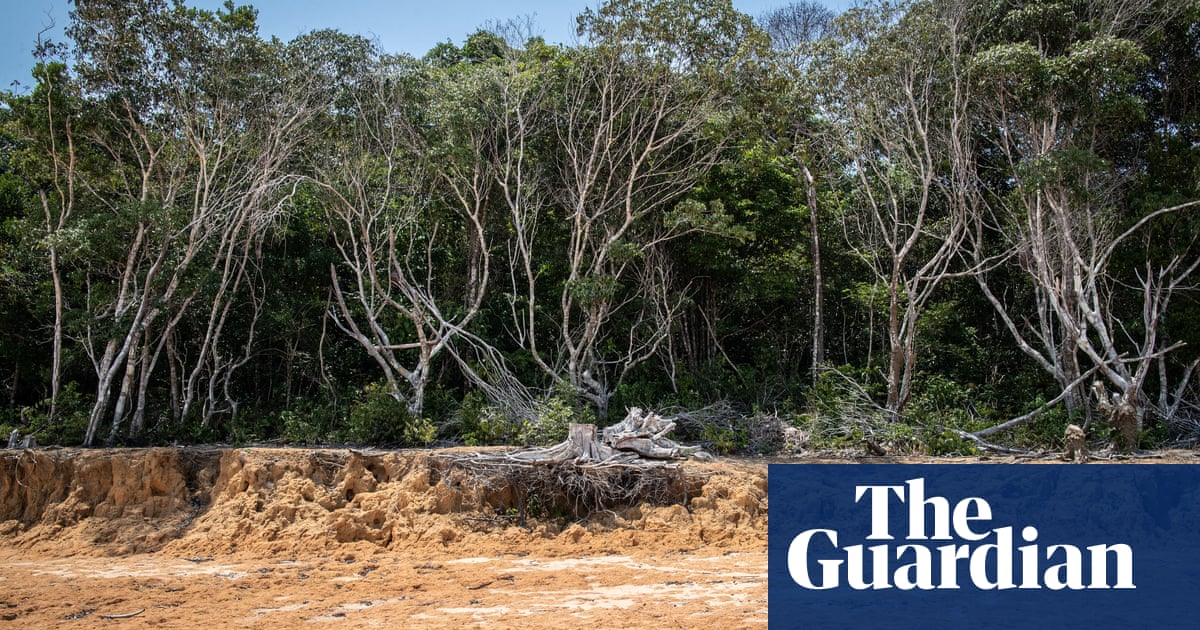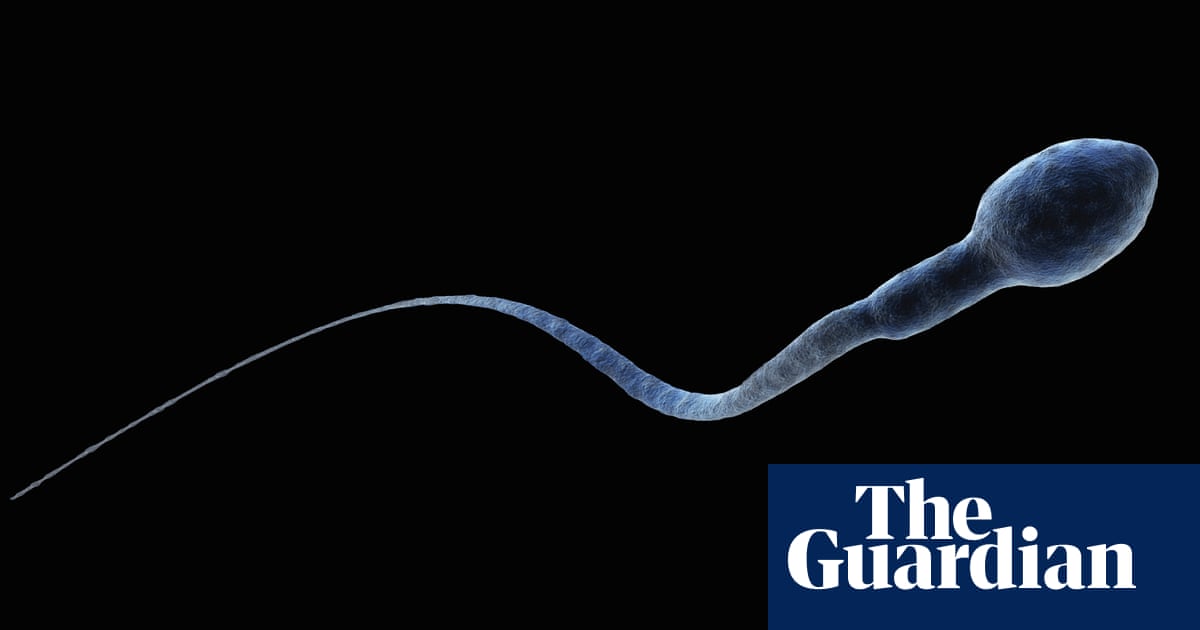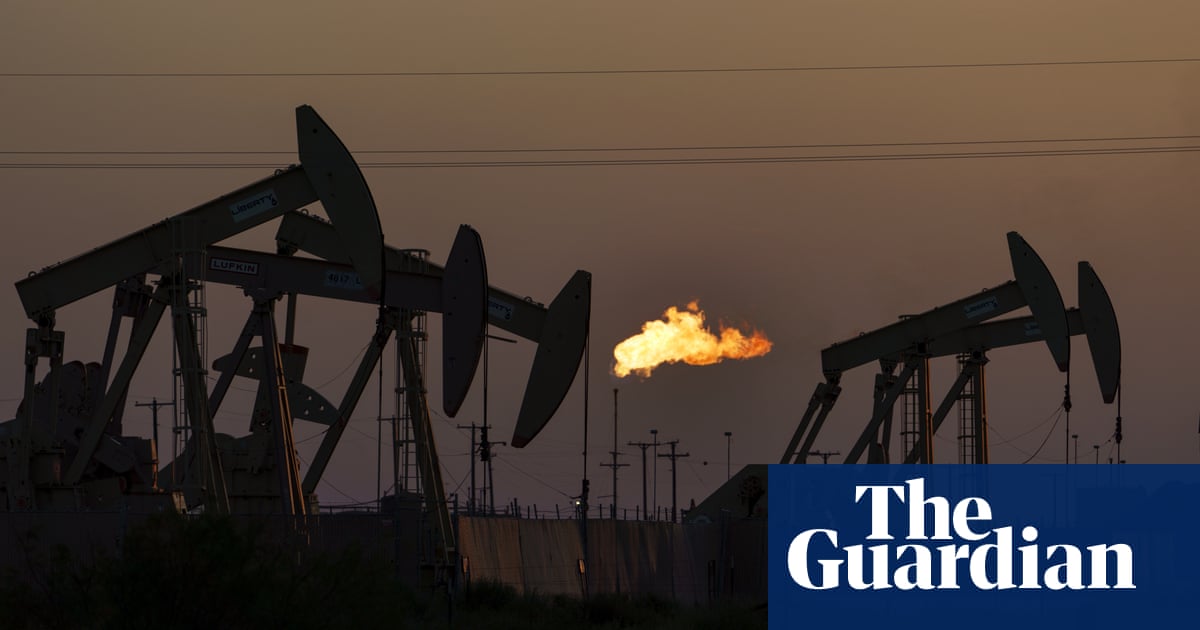
More than a third of the Amazon rainforest is struggling to recover from drought, according to a new study that warns of a “critical slowing down” of this globally important ecosystem.
The signs of weakening resilience raise concerns that the world’s greatest tropical forest – and biggest terrestrial carbon sink – is degrading towards a point of no return.
It follows four supposedly “one-in-a-century” dry spells in less than 20 years, highlighting how a human-disrupted climate is putting unusually intense strains on trees and other plants, many of which are dying of dehydration.
In the past, the canopy of the South American tropical forest, which covers an area equivalent to about half of Europe, would shrink and expand in tandem with the annual dry and rainy seasons. It also had the capacity to bounce back from a single drought.
But in recent times, recoveries have become more sluggish because droughts are growing more intense in the south-east of the Amazon and more frequent in the north-west.
The new paper, published in Proceedings of the National Academy of Sciences, examines satellite images of vegetation activity from 2001 to 2019. Tens of thousands of pixels, each covering a 25-sq km (9.65-sq mile) area, were analysed on a month-by-month basis and correlated with local rainfall data.
The authors’ goal was to investigate how “the frequency, intensity, or duration of droughts contributes to stability loss of Amazon vegetation”.
They found 37% of the mature vegetation in the region exhibited a slowing-down trend. While the patterns varied from area to area, they concluded that the highly deforested and degraded south-eastern Amazon was most vulnerable to a “tipping event”: in other words, a calamitous decline of the tropical rainforest to a different, drier state.
Their research found drought intensity was a more significant factor than drought frequency, though a combination of the two was most destabilising.
The paper’s lead author, Johanna Van Passel, said the satellite images only showed part of the true picture, and the situation below the canopy could be more severe. “Trees are the last part of the ecosystem to show tipping points because they have the longest life cycle and are most able to cope,” she said. “If we are already seeing a tipping point getting closer at this macro forest level, then it must be getting worse at a micro level.”
This is dire news for the Amazon and the world. The rainforest is home to 15,000 tree species, which help to draw down carbon dioxide from the atmosphere. But this ability – and the forest’s overall resilience – is being weakened by climate chaos caused by human burning of trees, gas, oil and coal. The paper says the slowing recovery rate of the forest may be an “early indicator” of large-scale ecosystem collapse.
“It makes me very worried about the future of the Amazon,” Van Passel said. “It is a warning sign that a tipping point can be reached in the future if these droughts continue to increase and get more intense.”
The Amazon, which is normally home to the biggest body of freshwater in the world, suffered a devastating drought last year that left its once-mighty rivers at record low levels, worsened forest fires and led to the mass die-off of more than 100 river dolphins. This was a continuation of a broader trend. The paper notes that the Amazon areas that had the lowest rainfall since the early 2000s suffered the largest decline in stability.
Trees are more likely to die in intense, very hot droughts due to two causes: hydraulic failure, which occurs when the plant’s xylem vessels rupture and lose their ability to pump water, and carbon starvation, which happens when trees are forced to close their stomata and eventually choke from a lack of photosynthesis.
Rainy seasons are growing shorter and more intense, which also hurts the ability of the forest to recover from drought because many tree species have not evolved to cope with extreme conditions.
In future, these trends will worsen because global heating will increase the intensity and frequency of droughts over the Amazon. The paper notes that this is “expected to cause changes in forest structure and functioning by increasing forest mortality and can potentially bring more areas in the Amazon closer to a tipping point”. Areas that are already affected by human tree cutting and fires are particularly vulnerable.
The paper warns the change in the internal rain cycle in the affected areas “may trigger a cascading effect, potentially leading to further slowing down in other parts of the Amazon forest, with implications for global effects on other tipping points”. To counter this, it urges international policymakers to protect mature forests, Indigenous peoples and other traditional communities, as well as reducing overall greenhouse gas emissions.
“The message to policymakers is that we must protect the forest that is still there, especially in the south of the Amazon. Farmers should stop cutting forest because they lose out when this reduces rainfall,” Van Passel said. “We must stop climate change. We have all this information, now let’s act on it … I’m worried, but hopeful.”












